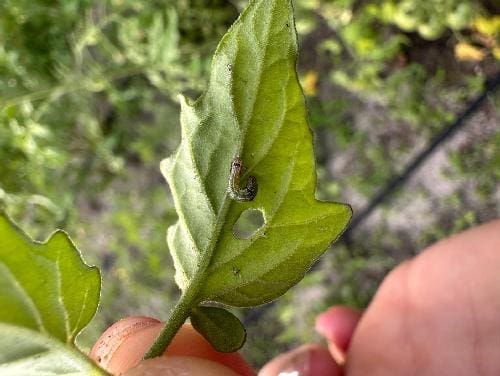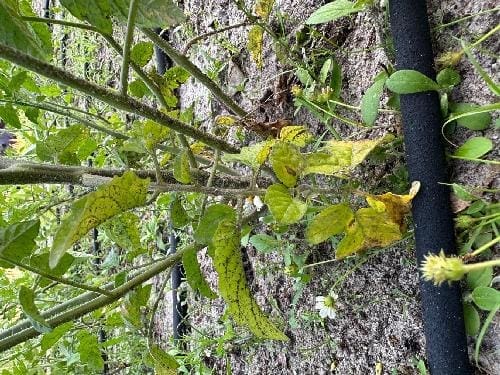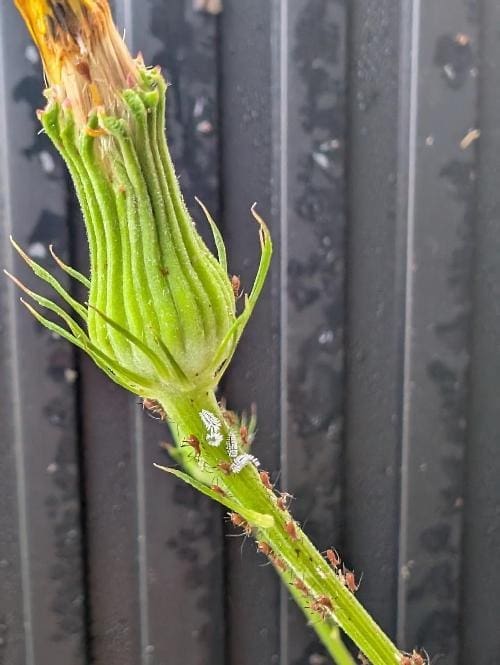By Lauren Goldsby
A healthy garden doesn’t just happen- it’s something that takes hard work attention and care. One of the easiest and most effective ways to stay on top of plant health is by developing the habit of scouting. Scouting can be done by walking through your garden regularly and observing what’s going on.
You’re not just admiring your flowers or checking to see if the tomatoes are ripe- you’re keeping an eye out for signs of pests, diseases, nutrient deficiencies, or other issues before they become serious problems. I often hear people say a problem seemed to appear overnight. While it may feel that way, there are usually early signs of stress that can be seen.
Scouting is a key part of Integrated Pest Management (IPM), a science-based approach that combines different strategies to manage pests in the most effective, environmentally responsible way. Rather than reaching for a pesticide the moment you see an insect, IPM strategies consider the problem as a whole. Is that insect actually harmful? Is it a pollinator, or even a beneficial predator helping control the pests for you? IPM helps you make informed decisions using cultural, physical, biological, and, when necessary, chemical controls- always with the goal of reducing harm to people, pollinators, and the environment. Read more about IPM here: https://gardeningsolutions.ifas.ufl.edu/care/pests-and-diseases/pests/integrated-pest-management/
While scouting my garden, I noticed a few signs of stress. Here’s what I did:

I noticed small holes in a few of my tomato leaves, upon turning the leaf over I found small cut worms that had recently hatched. I physically removed any caterpillars I could find and will continue to keep an eye on the tomatoes for any I may have missed. Beneficial wasps and lacewing larvae that naturally occur can help control cutworms too. Avoiding the use of broad spectrum insecticides helps our natural insect population keep this balance.

The oldest tomato leaves are touching the ground and leaf spots have appeared. Using clean pruners, I removed any tomato leaves that were touching the ground as this can be an entryway for pathogens. Reducing overhead irrigation and using drip tubing or a soaker hose for watering can help reduce pathogens as well.
Lower leaf yellowing also indicates a nitrogen deficiency. Nitrogen is a mobile element and moves from the old leaves to the new leaves when there is not enough. Yellowing on older leaves indicates that fertilizer is needed. This is not always caused by a nutrient imbalance-reach out to the Extension Office if you have any questions about your specific plants.
Aphids and mealybugs on a dandelion weed growing next to the garden. I removed the weed and disposed of it in my trashcan away from the garden. On an ornamental plant that belongs in my garden I would have to decide how and when to control the aphids and mealybugs. However, on a weed, it is easier and more effective to physically remove it. It’s a great reminder to scout the plants growing around your garden too!
 Scouting doesn’t need to be another chore on your to-do list. You can scout while watering the garden, walking with your morning coffee, or enjoying your glass of wine in the evening. Just a few minutes of regular observation can help you catch things early, when they’re easier to manage. And once you make this a habit, you’ll be surprised by how much you start to notice new blooms, insects you’ve never seen before, and the subtle signs that your plants are either thriving or in need of help.
Scouting doesn’t need to be another chore on your to-do list. You can scout while watering the garden, walking with your morning coffee, or enjoying your glass of wine in the evening. Just a few minutes of regular observation can help you catch things early, when they’re easier to manage. And once you make this a habit, you’ll be surprised by how much you start to notice new blooms, insects you’ve never seen before, and the subtle signs that your plants are either thriving or in need of help.





















































